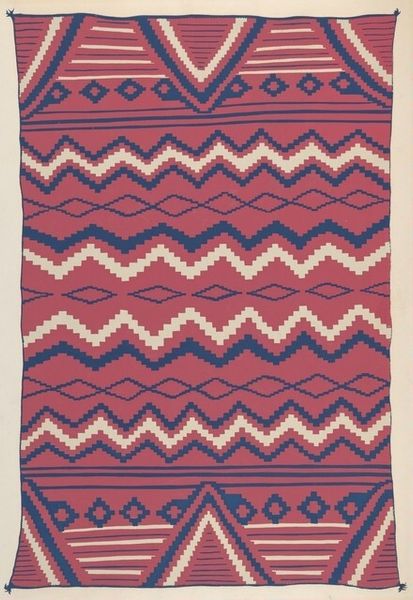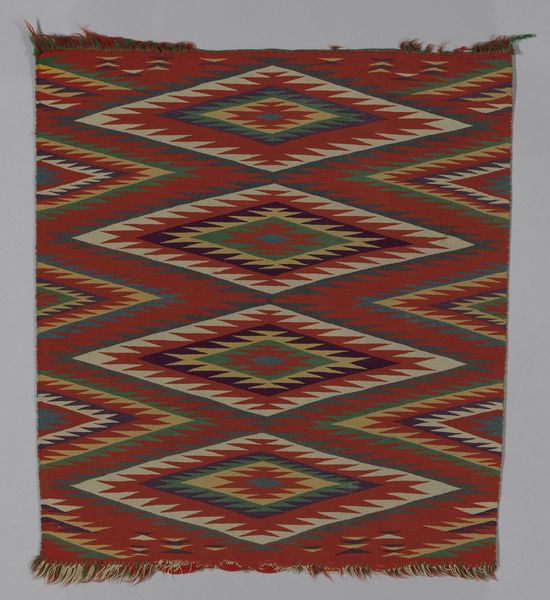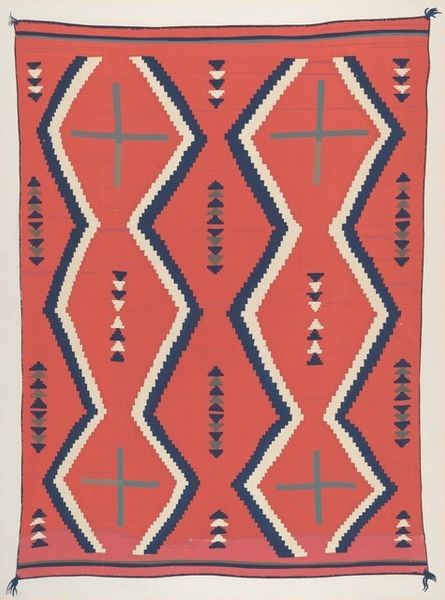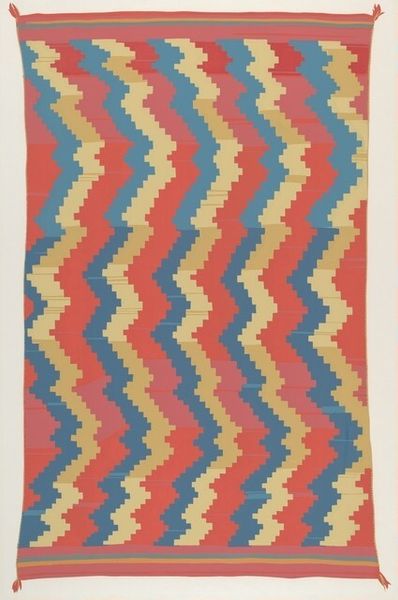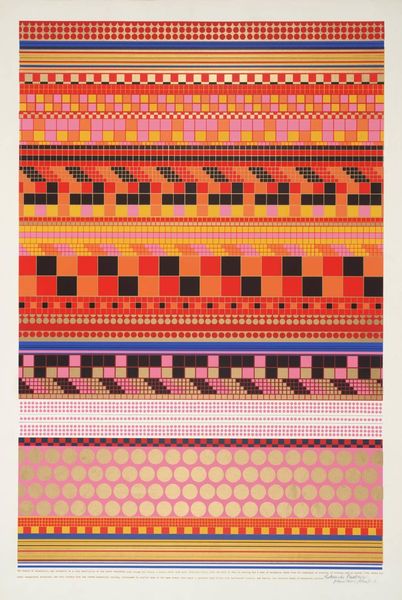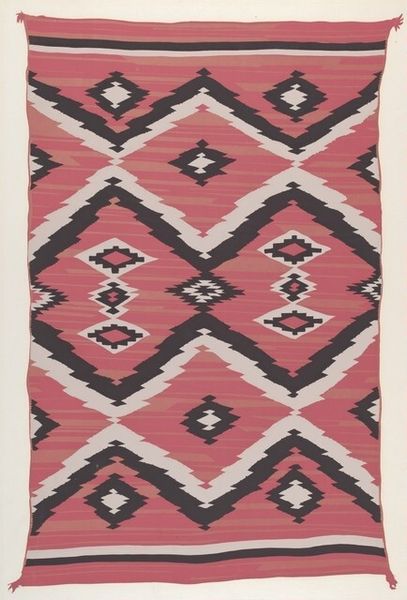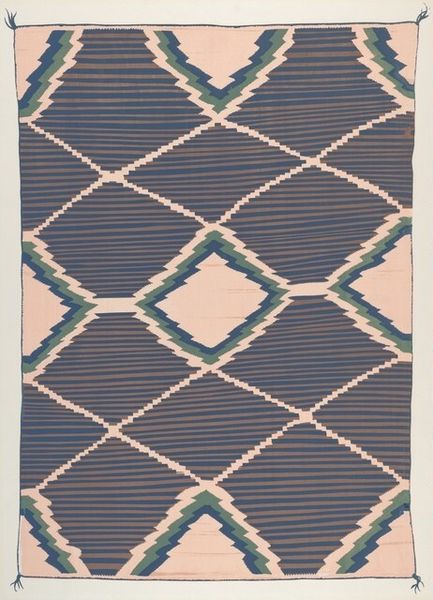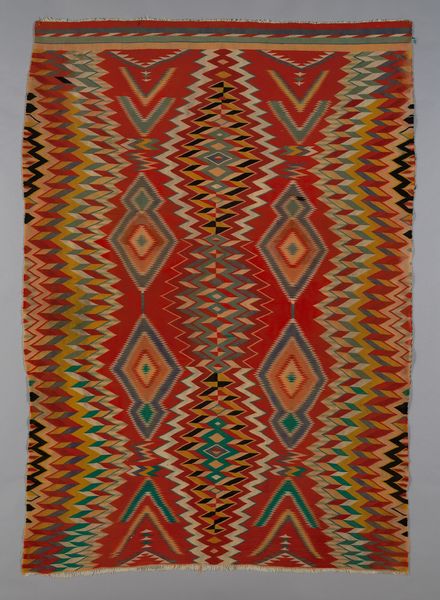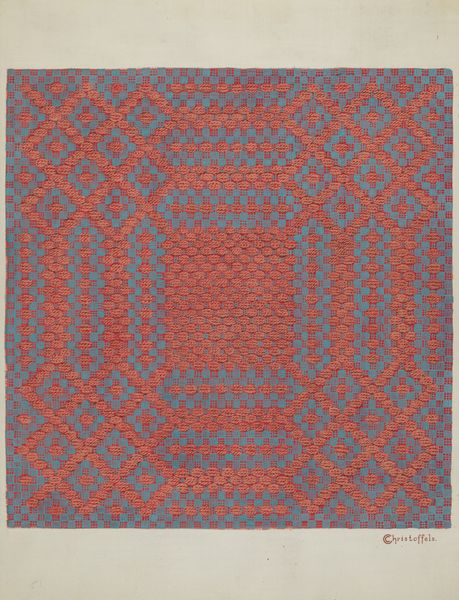
weaving, textile
#
weaving
#
textile
#
geometric
Dimensions: image: 550 x 390 mm sheet: 661 x 507 mm
Copyright: National Gallery of Art: CC0 1.0
Curator: Welcome. Today, we will examine "Plate 10" crafted by Louie H. Ewing between 1940 and 1943. This piece is a print, likely meant to simulate textile, showcasing the aesthetics of Indigenous Americas art. Editor: It immediately strikes me as a visually dynamic textile. The intense salmon hue and geometric layout creates a wonderful sense of warmth and comfort. Curator: Indeed, the artist has carefully employed repetition and symmetry. Note how the diamond shapes are vertically aligned, separated by zig-zag bands composed with triangular tessellations that alternate colors. This visual structure generates an order pleasing to the eye. Editor: These motifs speak of a rich symbolic visual language. Diamonds, repeated throughout, historically represent dwellings or eyes and could evoke ideas of protection and shelter in a domestic space. I wonder what that intense shade of coral might have evoked. Curator: Colour, being a material signifier, is itself a visual language with significant cultural associations. I am drawn to the artist's interplay of positive and negative space to bring clarity. Editor: I'd argue those sharp angles contribute to a kind of visual energy—a tension or perhaps an anticipation of movement, despite the woven artwork’s stillness. These patterns may carry generations of wisdom. Curator: What intrigues me most is Ewing’s subtle mastery in reducing cultural significance down to abstract designs while still managing to stir feelings of nostalgia and recognition. It's fascinating. Editor: Absolutely. This work really invites you to appreciate how symbolism enriches visual experience, making familiar patterns a deep cultural connection. Curator: Reflecting on "Plate 10", one appreciates Ewing’s thoughtful ordering, presenting traditional aesthetics via form, balance, and spatial dynamics. Editor: A beautiful example of how indigenous visual language can transmit and create meaning, fostering respect and dialogue with cultures through design.
Comments
No comments
Be the first to comment and join the conversation on the ultimate creative platform.





